























































Whether your child has a learning disability, such as dyslexia, has ADHD, or seeks academic enrichment, we can design an instruction program that ensures swift progress and improves performance with a strengths-based approach.

ONE-ON-ONE TUTORING

Your student will work online with a knowledgeable and experienced instructor for one hour to multiple hours each week. Our talented team of expert instructors works closely with each student, his or her family, and the school/educational team to create a customized learning plan to t each student’s needs. Contact us today!
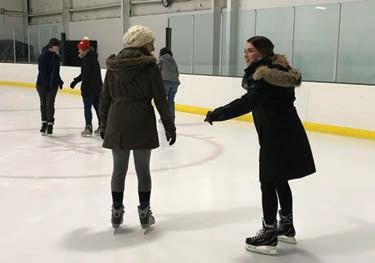



VISIT : sterncenter.org | CALL: 802-878-2332

COPUBLISHER/ EXECUTIVE EDITOR

Cathy Resmer cathy@kidsvt.com
COPUBLISHER
Colby Roberts colby@kidsvt.com
MANAGING EDITOR
Alison Novak alison@kidsvt.com
ART DIRECTOR
Kirsten Thompson
MARKETING & EVENTS DIRECTOR
Corey Grenier corey@kidsvt.com
ACCOUNT EXECUTIVE

Kaitlin Montgomery kaitlin@kidsvt.com
PROOFREADER
Carolyn Fox
PRODUCTION MANAGER
John James
CREATIVE DIRECTOR
Don Eggert
DESIGNERS
John James, Rev. Diane Sullivan
CIRCULATION MANAGER
Matt Weiner
BUSINESS MANAGER
Marcy Carton
CONTRIBUTING WRITERS
Keegan Albaugh, Meredith Bay-Tyack, Cat Cutillo, Astrid Hedbor Lague, Emily Jacobs, Elisa Järnefelt, Ken Picard, Benjamin Roesch, Brett Ann Stanciu
PHOTOGRAPHER
Andy Brumbaugh
ILLUSTRATOR
Marc Nadel
P.O. BOX 1184 • BURLINGTON, VT 05402
802-985-5482 • KIDSVT.COM
Published 11x per year.
Circulation: 35,000 at 700+ locations throughout northern and central Vermont.
© 2020 Da Capo Publishing Inc. All rights reserved.
Editorial content in Kids VT is for general informational purposes. Parents must use their own discretion for following the advice in any editorial piece. Acceptance of advertising does not constitute service/product endorsement. Kids VT distribution is audited for accuracy.
Da Capo Publishing shall not be held liable to any advertiser for any loss that results from the incorrect publication of its advertisement. If a mistake is ours, and the advertising purpose has been rendered valueless, Da Capo Publishing may cancel the charges for the advertisement, or a portion thereof as deemed reasonable by the publisher. Da Capo Publishing reserves the right to refuse any advertising, including inserts, at the discretion of the publishers.
I always loved HISTORY, especially world history and European history in high school. I think it helped that I had very engaging teachers who really knew how to tell the stories of history, not just the dates and facts.
ASTRID HEDBOR LAGUE, “MEALTIME” COLUMNIST
It was probably PSYCHOLOGY in high school. It was the first time I experienced a subject in school that somehow explained me, and I started to study it voluntarily, expanding my reading beyond the mandatory chapters.
In January of 1994, Kim Kropf and Tracey Shamberger founded Kids VT, Vermont’s free monthly parenting magazine. Susan Holson took over for Shamberger in 2007. In 2010, Kropf and Holson decided to sell this publication, which they called their “baby.”

Ten years ago this summer, a broker approached the ownership team of Seven Days to ask if we’d like to buy it. Seven Days was also founded by two women, Pamela Polston and Paula Routly. In 2010, they added three co-owners —me and my colleagues Don Eggert and Colby Roberts.
The five of us considered the opportunity carefully. Kids VT was a trusted local source for family-friendly activities and information. It had a robust events calendar and a distribution network in childcare centers and schools. Its Camp & School Fair on the first Saturday in February was already an annual tradition.
We decided it was worth the investment; we finalized the deal in December of that year and introduced our first redesigned issue in February of 2011.
What a wild ride it’s been! In our first year, Kids VT won several awards at the national Parenting Media Association conference, including the first of many prizes for best overall writing. We launched the coloring contest, an instant hit with the 12-andunder demographic. And we filled our pages with advice and recommendations from local parents, who generously shared their wisdom.
Kids VT has evolved since then, adding the Spectacular Spectacular talent show for Vermont’s rising stars; a civics initiative, the Good Citizen Challenge; and creative columns by a new crop of parents. Managing editor Alison Novak has been at the helm for five years and has steadily improved the design and content of each monthly issue.
Like you, we were blindsided by the coronavirus pandemic. The shutdown disrupted many of our advertisers, nearly all of the events in the calendar were canceled, and many pickup spots closed temporarily. Yet local parents still need reliable intel and creative ways to engage their kids.
We’ve continued publishing during this time by shrinking Kids VT slightly and folding it into Seven Days. When calendar and sta writer Brett Ann Stanciu took another job in June, Seven Days calendar writer Kristen Ravin assumed some of her responsibilities. Meanwhile, Novak, a former elementary school teacher, has been conscripted by Seven Days; she’s spent the summer reporting on the unprecedented changes to K-12 education.
Fortunately, Novak has developed a strong community of local freelance contributors who are now filling the pages of Kids VT — including illustrator Elisa Järnefelt, whose maritime cover image captures the odd mix of solidarity and isolation many of us are feeling as we sail into the fall semester. I’m so grateful for this crew, and I’m encouraged by the e orts we’re all making to take care of our kids and each other.
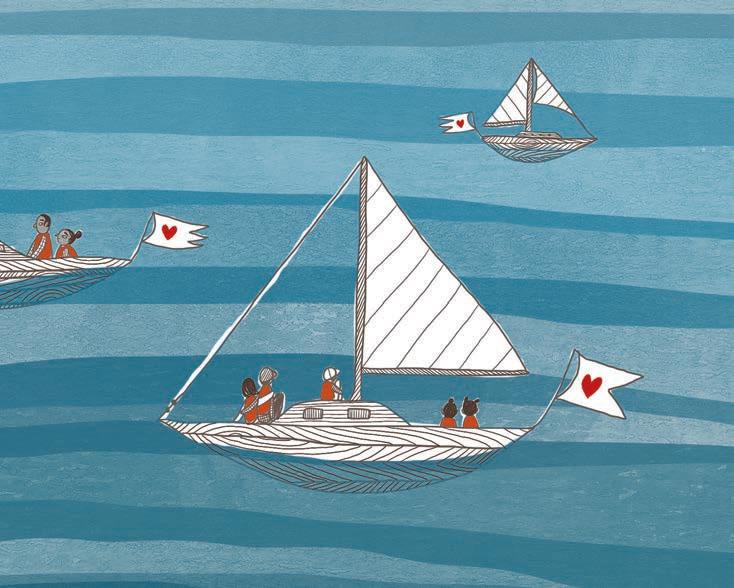
If you’d like to join us, or if there’s a topic you’d like us to cover, email ideas@kidsvt. com. Kids VT has changed a lot over the past decade, but it’s still a magazine written and designed by and for Vermont parents. We’d love to hear your “Ahoy!”
CATHY RESMER, COPUBLISHER/EXECUTIVE EDITOR
ELISA JÄRNEFELT, “MOM TAKES NOTES” COLUMNIST
ART and LANGUAGE ARTS were always my favorites. Art always felt expressive and fun — never like work — and I have always been an avid reader and loved to write. I also sang in chorus and a cappella groups throughout school, so music and chorus were close to my heart, as well.
EMILY JACOBS, “ART LESSONS” COLUMNIST
Sometimes I joke that I majored in FIELD TRIPS as a biology major in college.
HEATHER FITZGERALD, “GOOD NATURE” COLUMNIST
BENJAMIN ROESCH (“Musical Notes,” page 15) is a writer, educator, musician, podcaster, and passionate but hapless gardener. He lives in Burlington’s Old North End with his wife, Shannon, sons Felix and Leo, and gleeful mutt Shiloh. He’s hard at work on a YA novel.
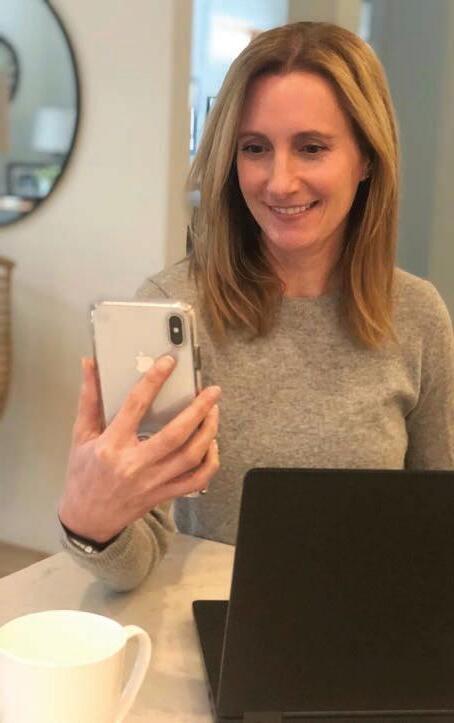















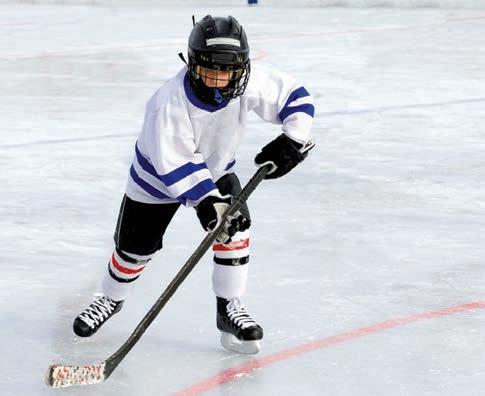










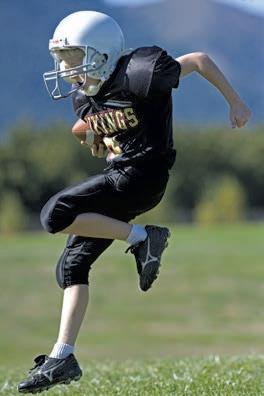
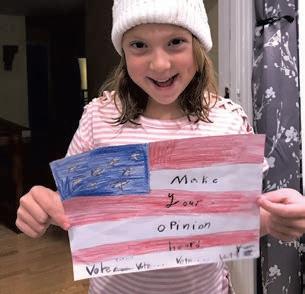


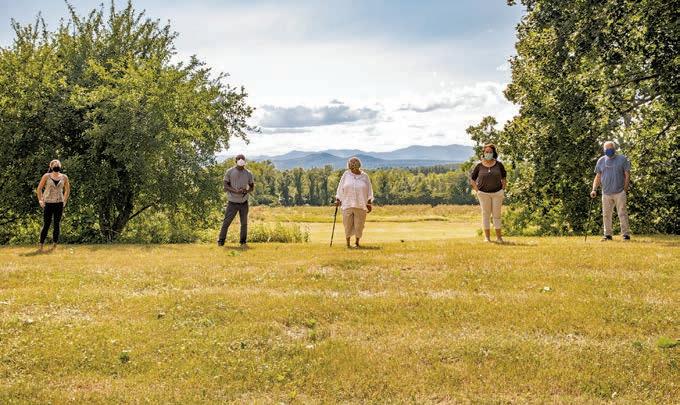















































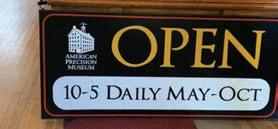

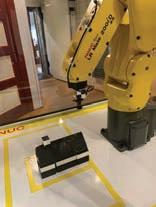















Essex Cinemas is volunteering space for a program for local K-8 kids on the days they’re doing remote learning, Seven Days reports. But will they be treated to popcorn and animated films during their study breaks?
Burlington-based Mamava will install lactation suites in more than 100 Walmart stores this year. Moms can even customize lighting and airflow and listen to soothing sounds inside the pod. It might not be a spa day, but we’ll take what we can get!
American Girl created five one-ofa-kind dolls to honor frontline COVID-19 workers, including a paramedic, a pilot and a grocery store worker.
Next up: a line of dollsize cloth masks?
Central Park in New York City unveiled a new statue featuring women’s rights pioneers. There are two dozen statues of men in the park, but this is the first featuring real women (not just fictional characters, like Mother Goose and Alice in Wonderland). It’s about time.
Waterfall is a great way to release stress and get our body ready to focus!
BENEFITS:
• Relaxes the nervous system
• Changes perspective
• Stretches back side of body: legs, spine and neck
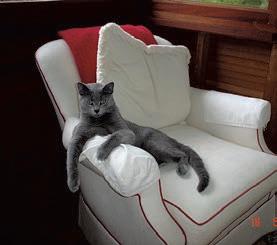
• Stimulates digestion
STEPS:
• Stand in mountain pose.
• Raise your arms up to the sun.
• Bring your arms out and down to your toes. Keep your knees slightly bent, more if your hamstrings are tight.
• Let your head hang. Breathe, maybe making the sound of a waterfall.
• When you’re finished, roll your spine back up.
HAVE FUN!
• Tickle your toes or a breathing buddy (stuffed animal).

• Let your arms swing from side to side.
• Count your toes.
• Slap your hands on the ground, splashing in some water.
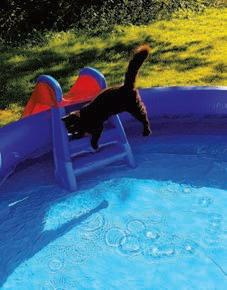
• Try the pose by water or in the sprinkler.
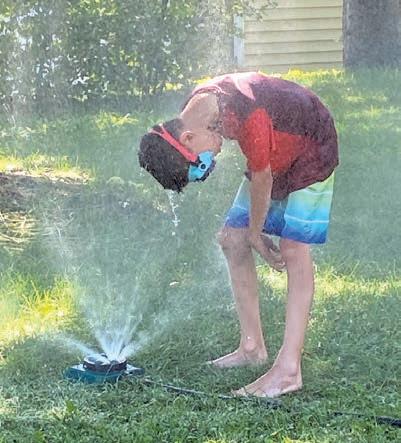
1. Alpacas, submitted by Melissa Pierce of North Branch Alpaca Farm. 2. Amber with 2-year-old Australian shepherd/collie mix Kate, submitted by Hannah Manley. 3. Sox, adopted from the humane society in 2006, submitted by Sarah Soule. 4. One-year-old dachsund Pepperoni, submitted by Jennifer Jorgenson. 5. Meggie the Goldendoodle with Ethan, submitted by Mary Jane Oszurek. 6. Thea the dog, submitted by Judy Klima. 7. Twoyear-old Boris the cat from Derby, submitted by Annette Vallieres.

Thanks for sharing your summer photos with us using the hashtag #instakidsvt. We loved this picture shared by Jericho resident Kelly Longley of her 8-year-old daughter Meadow’s fresh back-toschool hairstyle, courtesy of Kristin Ploof of Serendipity Salon & Boutique in Essex.



Share photos of your family exploring new places this month.
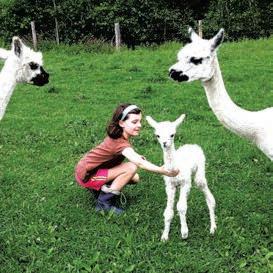
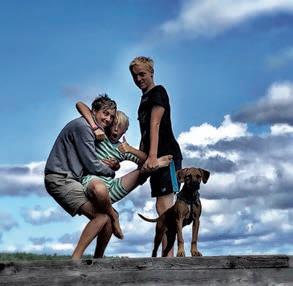
HERE’S HOW: Follow @kids_vt on Instagram.
Post your photos on Instagram with the hashtag #instakidsvt. We’ll select a photo to feature in the next issue.
• Give an extra-long hug to a loved one or a pet — just because.
• Stand facing in the sun, with your eyes closed, for at least 60 seconds.
• Use an app like Insight Timer to complete a short, guided meditation.
• Make a list of to-dos or do a task dump, where you write down everything that’s popping up in your brain and causing guilt or anxiety, regardless of the category (work, family, home).

• Check one small thing off your daily to-do list, like putting in just one load of laundry or emptying the dishwasher.
• Play an upbeat song and dance like nobody’s watching. Jump up and down and vigorously shake out your hands, arms, legs and feet.
Taking care of kids stretches us to our limits under any circumstance.
During a global pandemic — when childcare, support systems and so much else is unstable — it’s even more difficult. We have decision fatigue. We feel overwhelmed. Sometimes, it seems like there are no good choices.
I’ve come across countless advertisements and emails over the past few months for products promising to melt away tension if I just buy XYZ. Yes, please sell me a lotion that will help me make a decision about what to do about school in the fall!
If you’re like me, you may not love the term “self-care,” because it seems like it’s only for people in movies who like bubble baths. Whatever you call it, we need to take care of ourselves the way we take care of our family. Even if we are tempted by marketers’ promises, the truth is, we don’t need to spend money or create lots of waste in order to carve out peaceful moments.
The first, and hardest, step is figuring out what will help calm your mind and body. Make a list on paper or in your head. While I’m sure we’d all like an
all-expenses-paid vacation to a tropical beach, let’s cross that o for now.
Sometimes it’s hard to know where to begin. So here’s a menu of self-care options. Don’t set unrealistic expectations; you likely won’t be fully transformed by any one of these stress-relieving activities. But picking a few and practicing them consistently can make a huge di erence.
Pro tip: Eliminate as many barriers as you can. For example, drinking a glass of water plain or with lemon first thing in the morning seems easy enough. However, I try to keep a glass of water in the fridge or on the counter so that I don’t even have to think about filling it up.
• Go ahead, take that bubble bath or long shower. You conserve water on a daily basis, so it’s OK to get a little indulgent on occasion. If you have some essential oil on hand, a drop in the water is a lovely way to engage the senses and distract a busy mind. I like lavender and bergamot. Take extra time when you get out to rub whatever oil you may have onto your arms and legs. No need to run to the store or order a magic elixir for two-day delivery. Olive oil, sweet almond oil and coconut oil are all good options.
• Take a walk or hike by yourself. Try leaving your phone at home if you’ll be close by. Listen to music or a podcast if you want, but only if it’s helpful.
• Move your body however you like. Run, do yoga, bike, jump on a trampoline or do a workout video. Notice if having a goal in mind — whether it’s time, distance or another fitness milestone — is helping your focus or adding additional worry.
• Sit by water without an agenda. Some of us are used to making the most of every moment, so this may not come easily. Bring a book if that helps. Or repeat a mantra like, “My only job right now is to sit here.”
• Get creative and make something. Build something with wood and nails, or pull out your kids’ watercolor set. Plan to give the item as a gift if that feels empowering and motivating.
• Put on relaxing or deep-sleep music, light a candle, and lie down with an eye mask or even a T-shirt over your eyes. Set a timer for 20 minutes.
• Write in a journal — no special equipment necessary; any paper will do. I like writing with a pen, but a digital notebook may work for you. At the beginning of the pandemic, I started a journal, thinking it would be good to document this time in history. I quickly realized that was putting too much pressure on myself and, since then, I’ve been using it in the same way I would talk to a friend. It’s been great to have another outlet to share the myriad of thoughts, feelings, ideas and news swirling around in my brain at any given time.
• Schedule rest and alone time daily or weekly. Make sure your partner or other adults in the home are aware of your plans.
• Reduce screen time. Plug in your phone outside your bedroom at night. Commit to a screen-free week or one day a week to play a board game, read or complete other tasks without the television on.
• Our mental health is being tested to an extreme level right
now, so speak with your doctor if you feel like you need additional help.*
• Book a telehealth appointment with a counselor or therapist.* If you don’t need any more video-chatting in your life right now, ask to speak with them over the phone.
*If you don’t have a therapist or primary-care doctor already, finding someone can be time-consuming and possibly frustrating. I know it was for me, but doing so was worth it. Reach out to friends and family to assist you in making calls and doing research to secure professional help.

Childhood diseases haven’t gone away simply because our attention is focused on COVID-19. Unfortunately though, the pandemic has reduced the number of children receiving routine immunizations, raising fears that Vermont could see a resurgence of vaccine-preventable illnesses.

As Dr. Lewis First, chief of pediatrics at the University of Vermont Children’s Hospital, explains, keeping kids on schedule with the mandatory immunizations required for attending K-12 public schools has never been more important. Not only will routine vaccines protect the health of your own child and fellow Vermonters, they will also help ensure the strength and resilience of the state’s health care delivery systems.

KIDS VT: What impact has COVID-19 had on childhood vaccination rates?

LEWIS FIRST: When the pandemic arrived, it resulted in stay-at-home orders that reduced medical visits to essential care only. As a result, annual checkups and routine vaccinations initially weren’t a top priority. We know that, in Vermont and around the country, vaccination rates for all diseases dropped. The good news is, once we started to reopen and medical o ces adopted suitable precautions against COVID-19 transmission, vaccine rates rose again, but they’re still not where they were a year ago in Vermont. That’s a problem.
KVT: Why?
LF: Vaccinations prevent serious diseases and literally save lives. Health-wise, children are faring well with the coronavirus pandemic, and we don’t want to see unnecessary illnesses and deaths because we became lax on routine vaccinations. I can’t emphasize enough how important it is that we keep vaccination rates at or above 95 percent, which is where we were in 2019. When rates drop below 95 percent for a recommended vaccine, we open the possibility that children are going to get these diseases. This has happened with outbreaks of measles and whooping cough in areas where people chose not to get their kids vaccinated. According to the Vermont Department of Health, more than 95 percent of K-12 students had all their required vaccines as of 2019. But some schools had immunization rates below 95 percent. So, there’s still work to be done.
KVT: Why is this so important now?
LF: Thanks to rapid advances in telehealth, we can do a lot of routine screenings and health assessments without having children and their caregivers come into the o ce. But we still need to find a way to get children vaccinated, meaning they need to be seen in-person to receive their immunizations so that, in the midst of the pandemic, we’re not using up health care resources on illnesses that are entirely preventable and could really overwhelm the health care system.
Consider the 1950s and early ’60s, before the measles vaccine, when there were more than 500,000 measles cases in the United States and hundreds of childhood deaths. By the 1970s, there were zero deaths. We thought measles was finally eradicated by the turn of the 21st century, until measles vaccination rates dropped and cases of measles returned.
We don’t want to trade one health care crisis for another.
Now, think about the coronavirus pandemic. Here we are with millions of cases worldwide and in the United States. If we get a vaccine, hopefully soon, we’ll see an end to this pandemic and the many thousands of people dying from COVID-19. The su ering and deaths that could be caused by children missing routine vaccines could be far greater than COVID itself. We don’t want to trade one health care crisis for another.
KVT: Some vaccine skeptics claim that giving children too many vaccines simultaneously overwhelms their immune systems and makes individual vaccines less effective.
LF: Those claims are simply not true. The number of germs targeted by vaccines, though important ones, are only a tiny percentage of the number of germs the immune system fights every day.
Secondly, the immune system stays strong after receiving a vaccine and can rev up to fight whatever comes its way. In other words, one vaccine or multiple vaccines don’t weaken the immune system.
KVT: Why do children receive multiple vaccines simultaneously?
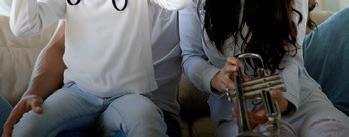
LF: We give multiple vaccines when children are at an age when infections that we are trying to prevent with vaccines tend to flare up and are at greatest risk. The Centers for Disease Control and Prevention and the American Academy of Pediatrics, who set the recommended vaccine schedule, find that if you delay vaccines or stagger them, you’re losing precious time, during which your child can become infected. At the same time, we find that many parents who want to stagger the vaccine schedule and give only one at a time never return to complete the vaccine series because they lose track or the visits become too costly and time-consuming. Nowadays, we’re immunizing children against 16 di erent diseases. So being able to cover many of those diseases with multiple vaccines in a single visit is well worth the investment to protect them from debilitating and deadly illnesses.
KVT: What about the flu vaccine, which often isn’t as effective as others?
LF: No vaccines are 100 percent e ective. But if they’re 80 or 90 percent e ective or higher, which many of them are, then you’re dramatically reducing the likelihood of children contracting those diseases. Each year, vaccine developers develop the flu vaccine to protect against strains with the most likelihood of occurring within our country. Even if they choose the wrong strain for that season, there is still thought to be crossreactivity, meaning that if you get the flu with a strain of the virus not covered by the vaccine and received a flu shot, it tends to be milder than if you didn’t get the vaccine.
Also, flu symptoms look very similar to COVID-19. So, if we see more people contracting the flu because they did not get the annual flu vaccine, that will require more people getting tested for COVID. That could deplete limited testing resources, slow down the time to get results back and possibly even take up hospital beds. Finally, the ideal timing for children to receive the flu vaccine has not changed. We still want children to get vaccinated by the end of October, before peak flu season arrives, but the vaccine can be given throughout the fall and winter season and still make a di erence.



An Indian-inspired British classic
Three years ago, when the world was simpler and international travel was still possible, my mother brought my family on a whirlwind weeklong trip to the United Kingdom. We drove roughly 1,000 miles that week, from London to Edinburgh and back, with many stops at wonderful places along the way.
One of the most memorable experiences was afternoon tea at Edinburgh Castle. With an assortment of finger sandwiches, tiny cakes and cookies, scones with clotted cream and the most amazing honey-sweetened strawberry jam, and Earl Grey and peppermint tea, it was a quintessential British experience. Other than that amazing jam (which I’ve since discovered Smucker’s makes a pretty good version of), a favorite was the Coronation Chicken sandwiches.

The original Coronation Chicken was created for — you guessed it! — the Coronation of Queen Elizabeth II in 1953. Essentially a curried chicken salad, the version we had as part of our tea was lightly spicy and a little sweet from the addition of golden raisins and chunks of mango
that seemed to be part of a chutney. When we returned stateside, it was one of the first recipes I re-created. Recently, we were celebrating a birthday at my mother’s house and trying to think of a way to have a socially distant meal for three groups of people. Mom has three tables and a large deck, so that part was easy enough. We have had meals like this before, but it is always hard to serve everyone while keeping physically distant. Then an idea hit me: How about afternoon tea? It was perfect. I even made tiered tea trays for each table using secondhand china plates and small wine glasses glued together (thanks, Pinterest!). We had treats on the top tier (store-bought macarons and shortbread, and homemade almond-lemon tea cakes), homemade scones on the second tier (with clotted cream my mom made in her slow cooker), and finger sandwiches on the bottom tier.
For sandwiches, we had cucumber with Boursin cheese; smoked salmon and avocado; and, finally, Coronation Chicken. By thinking a little outside the box, we were able to have a wonderful, safe get-together.
Not only is this chicken salad simple, it also keeps well. Whip up a big batch on the weekend, and your kids can enjoy it in packed school lunches or for a meal at home on remote learning days during this unconventional school year.
I made this batch with fresh chicken, but in the past, I have also made it with canned chicken, and no one was any wiser. I used mango-ginger chutney from Trader Joe’s and a nice curry powder from Penzeys Spices, but you could substitute another sweet mango chutney and your favorite curry powder. I do recommend that you use a sweet curry powder, not a spicy one, as it’s more in line with the traditional flavor and more universally kid-friendly. My son and daughter both absolutely adore this recipe, so our leftovers don’t last long.
• 2 pounds boneless, skinless chicken breast

• 2-2 1⁄4 cups mango chutney, to taste

• 1 cup mayonnaise
• 1-2 tablespoons curry powder, to taste












• 1⁄2 cup golden raisins


DIRECTIONS:
1. Cook chicken fully. (I used my Instant Pot on high pressure for 15 minutes with 1 1⁄2 cups water, followed by a 10-minute natural pressure release, but you could poach or bake the chicken until it reaches 165 degrees, or even throw it in a slow cooker on low for 6-8 hours). Cool to at least room temperature. Shred the chicken. (If you have one, a stand mixer with the paddle attachment is the quickest way to shred chicken.)
2. Combine the chicken with the other ingredients, mixing well. Chill for at least one hour, allowing flavors to meld.
3. Enjoy as a sandwich filling or over a bed of greens.



Afew weeks ago, as I was listening to a podcast about going back to school, my 12-year-old turned to me and said, “Wait. We’re still going to have to be social distancing in the fall? I thought it was going to be over!” Then he stomped out of the house.
We are all preparing for a school year that feels extremely unpredictable. All we know for sure is that it will not be the same as before COVID-19. As we learn more about a virus that makes being indoors more risky than being outdoors, I am haunted by three sentences I came across while scrolling through Sophie Lovett’s Raising Revolutionaries blog in March:
“The situation we are facing is beyond compare, and I very much doubt that the world is going to be quite the same when we emerge from our respective periods of isolation. It is a once-in-a-lifetime chance to reflect on what our true priorities are for ourselves and our children. If that’s completing worksheets then go for it — but if it’s not, take this as permission to try something new.”
As Joan Carey, environmental educator at Bonnyvale Educational Center in West Brattleboro, notes, “Most traditional academics can probably be done outside with the right systems or gear, but how do we take advantage of connecting with nature and place? What opportunities are here?”
I asked people who have been practicing outdoor education long before this moment what parents and teachers might want to consider as we prepare for the fall. I spoke with educators at four organizations across the state that run very di erent programs catering to a variety of audiences. I focused on their elementary and middle school programs, and what lessons they might hold for parents and teachers.
Outdoor learning this fall is going to look as di erent as the educators who are conducting it. Many programs in elementary schools focus on science standards, but, says Carey, “Outdoor time is not separate and apart.” She regularly works with teachers who incorporate math and literacy into outdoor learning.
The vision of Julia Hunt, one of the founders of ReTribe in Underhill and Richmond, involves “a part that is sitting and a part that is doing” and lots of
play — for example, writing a story that students can then act out in the forest.
Hunt suggests we take this moment as an opportunity to “rethink what it is we want children to grow up knowing.”

“What is the outcome we are looking for?” she asks. As a starting place, she o ered this answer: “people who can contribute to the world and create happiness within themselves.”

Ross Doree, youth programs director of outdoor education program Crow’s Path in Burlington — which my son has attended for many years — says that outdoor education today “is less about giving kids the right information and more focused on giving them opportunities to be deeply creative, connected, exuberant people. The outdoors is a limitless environment to develop those traits.”
His program aims to nurture curiosity and teach kids to teach themselves. Being in nature, Doree says, “fills kids up so they can come back to the classroom rejuvenated.”

John Hunt, another founder of ReTribe, Julia’s partner and a citizen of the Nuhlegan Band of the Coosuk Abenaki Nation, points out that “knowing how to manifest what you have in your mind is a skill.” Students at ReTribe learn that what they do has an impact on the group through activities such as gathering firewood and building fires.
Sean Beckett, director of natural history programming at North Branch Nature Center in Montpelier, puts it this way: “I think it will be helpful to be OK with the fact that this fall is not normal, and to be OK with not getting the same level of content. The goal is that kids are healthy, inspired, using their imaginations, learning, being curious, asking questions, investigating, exploring, coming up with hypotheses and asking

new questions from what they have learned. We can see it as a big success if kids can stay curious — if we can cultivate the fire so it is still burning.”

Many of these experts point out that when it comes to outdoor learning, the outcomes are often not what we expect. Carey suggests that it presents the opportunity to be extremely responsive to students’ questions and interests, about topics such as seasons, weather and place. In nature, says Doree, success is not as narrowly defined as it often is in a classroom; it can therefore become internally defined by what resonates with each child.

Finally, many of these seasoned outdoor educators note that we will be asking a lot of educators who are not accustomed to teaching outside. Carey is frank about what teachers will need: professional development, planning time — a lot of it — and supplies, such as clipboards and outdoor clothing, for both students and teachers. Bonnyvale has developed a document for local school districts, “Teaching Outside 101” (find it at beec.org in the “BEEC Online” section) with detailed suggestions related to many of the logistical challenges facing schools that are contemplating how to set up outdoor learning from scratch. Working together outside could be very positive and restorative,” says Carey, “but it only will be if the teachers have support.”
I can attest to that. This summer, I was scheduled to co-teach a college course that I have taught for many years. My plans were more or less ready to go. When things changed and I had to adapt them to our new reality, it took me, and three professionals assigned to help me, 120 hours to prepare — for a mere 25 hours of teaching.
Good teachers are already doing the things these outdoor educators discuss inside their classrooms. As the school year begins, I’ll be thinking about how I, as a parent, can advocate for more learning outside and support teachers in implementing it thoughtfully.
BOOKWORMS BY BRETT ANN STANCIU
While much of history has been written by men, women have never sat by idly. One hundred years ago, ratification of the United States Constitution’s 19th Amendment — which granted women the right to vote — marked a major milestone for women’s rights. Enormously controversial, the amendment passed by a single vote after decades of work by women — and men. And it only secured the right for white women; many Black women were disenfranchised until the passage of the Voting Rights Act of 1965.
This month, as children across Vermont transition from summer to schooling — either in-person or remote — we gathered a list of literary resources showcasing women’s rights and su rage. As essayist Rebecca Solnit writes, “A free person tells her own story.”
Good Night Stories for Rebel Girls: 100 Tales of Extraordinary Women
by Francesca Cavallo and Elena Favilli(Ages 7 and up)
This two-volume set features 200 one-page stories of remarkable famous and not-so-famous women. Selections include Aisholpan Nurgaiv, who became the first woman to enter the Golden Eagle hunting competition in Ölgii, Mongolia; and Italian Beatrice Vio, who won international fencing competitions although her legs and forearms had been amputated to save her life from meningitis. Look for a new compendium, Good Night Stories for Rebel Girls: 100 Immigrant Women Who Changed the World, in October.
Roses and Radicals: The Epic Story of How American Women Won the Right to Vote
by Susan Zimet and Todd Hasak-Lowy (Ages 10 and up)
Roses and Radicals tells the story of the heroines — including Susan B. Anthony, Alice Paul, Mary Wollstonecraft and Matilda Joslyn Gage — who campaigned relentlessly for decades to pass the 19th Amendment. They endured ridicule, arrest, imprisonment and torture — but, nevertheless, they persisted.
Finish the Fight!: The Brave and Revolutionary Women Who Fought for the Right to Vote
Shirley Chisholm Is a Verb! by Veronica Chambers, illustrated by Rachelle Baker (Ages 4-8)

This picture-book biography tells the story Chisholm, the first Black woman elected to Congress in 1968, who sought the Democratic nomination for president in 1972. Chisholm famously said, “If they don’t give you a seat at the table, bring a folding chair.” Award-winning author Chambers grew up in Brooklyn during the time when Chisholm was running for office.
My Name Is Truth: The Life of Sojourner
Truth by Ann Turner, illustrated by James Ransome

(Ages 6-10)
This historical picture book tells the story of Isabella Baumfree, who was born into slavery in 1797 and escaped to freedom with her infant daughter 29 years later. Baumfree renamed herself Sojourner Truth and became a staunch abolitionist and women’s rights activist.
I Dissent: Ruth Bader Ginsburg Makes

Her Mark by Debbie Levy, illustrated by Elizabeth Baddeley
(Ages 4-8)
Around America to Win the Vote: Two Su ragists, A Kitten, and 10,000 Miles by Mara Rockli , illustrated by Hadley Hooper

(Ages 5-8)
This biographical picture book features the now87-year-old Supreme Court justice — also known as RBG — who has devoted her life to standing up against inequality and unfair treatment. Ginsburg demonstrates that fighting for what’s right is worthwhile work. Also check out Notorious RBG Young Readers’ Edition: The Life and Times of Ruth Bader Ginsburg by Irin Carmon and Shana Knizhnik. This lively and lighthearted biography, geared toward ages 8-12, introduces young readers to the importance of the Supreme Court and the influence of one remarkable woman.
Elizabeth Leads the Way: Elizabeth Cady

Stanton and the Right to Vote by Tanya Lee Stone, illustrated by Rebecca Gibbon (Ages 4 and up)
byVeronica Chambers and the sta of the New York Times
(Ages 8-12)
This new release for middle-grade readers tells the stories of some lesser-known figures who fought for women’s right to vote. Short illustrated biographies of activists — including Mary Eliza Church Terrell, who cofounded the National Association of Colored Women, and Mabel Ping-Hua Lee, who, as a teenager, helped lead the biggest parade in history to promote the cause of su rage in 1912 — highlight the important role of people of color in the women’s su rage movement.
In April 1916, Nell Richardson and Alice Burke left New York City in a little yellow car on a mission to crisscross America to campaign for equal voting rights for women. They packed a typewriter, a sewing machine and a black kitten. As this picture book pluckily illustrates, the two friends endured blizzards, deserts and ardent critics in their quest to make positive change.
Abolitionist Stanton headed the early women’s rights movement in the 19th century. In addition to organizing and campaigning for the women’s voting rights movement, Stanton addressed wider issues a ecting women — including parental and property rights, employment and income, divorce, and birth control. Vermont author and Champlain College writing professor Stone also wrote Who Says Women Can’t Be Doctors? The Story of Elizabeth Blackwell and Almost Astronauts: 13 Women Who Dared to Dream, a middle-grade book about 13 women who tested to be astronauts in 1961 and were turned away because of their gender.


What follows are selections from my recent conversation with Boston-based guitarist and educator Lyle Brewer. Brewer has been playing live in Burlington for many years, first as a member of the Ryan Montbleau Band and more recently in solo shows at the Light Club Lamp Shop, which he considers one of his musical homes.
I spoke with Lyle about how he’s staying afloat as a working musician; parenting his 9-year-old son, Elliott, with his ex-partner; and finding a new perspective in the age of COVID-19.
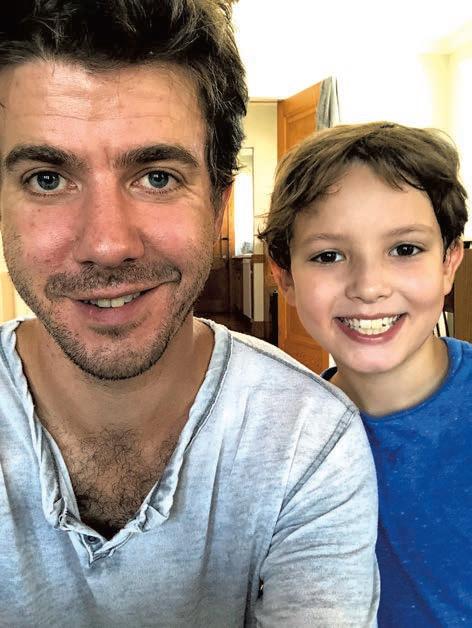
On adapting to changes at home
We’ve had to set boundaries in the house. We sit around the breakfast table and make a schedule for the whole day. I’ll say, “This is the work environment for the next hour, and then we can have a wrestling match!” We’ve had to develop a structure on our own.
On helping Elliott understand safety protocols
One of the hardest things to explain to him is that everyone’s supposed to be wearing masks, and a lot of people aren’t. It’s a drag, because we can look out our window and there’s kids playing but not wearing masks. It’s gotten rid of that illusion that all parents think the same. Instead, it’s our family. I tell him, “Even though you’re a kid and I’m an adult, we always have to be on the same page. We have to do certain things even if other people aren’t doing them.”
On the unexpected benefits of being home together
I was able to see how really independent he’s become, because he had to do all his homeschooling on the computer. I was shocked at how on top of it he was. You can only gain so much understanding of how your kid is when they’re at school.


On exposing Elliott to the guitar in a natural way I want him to feel what it feels like to be really good at something. Excelling at an activity allows you to have a deeper connection with what you’re doing. But the fact
that I do it makes it so much less cool! The hardest thing is knowing when to cut him some slack and when not to. I’m very relaxed most of the time, but if I see him try something and give up right away, it’s not good to develop that relationship with the world.
On what it felt like when music venues started closing
It was definitely disappointing. I’ve put a lot of work into trying to be able to travel in a way that worked with my schedule with Elliott. I had plans to go to Nashville. I was going to go to Chicago. I was going to do a show at [jazz
guitarist] Charlie Hunter’s place in Greensboro [N.C.]. I was going to go to Montréal. That all got canceled. I was pretty disappointed at first, and then the whole world shut down.
On teaching guitar online to earn extra money

I started a Patreon [online teaching] site in 2018, and when the pandemic hit, I made an e ort to pay more attention to that. I promoted it a lot more and was able to earn more money from it, so that’s a way of getting by.


On making his pandemic album Hold On
I didn’t really have plans to make a record. But I realized I could just get a home recording setup, record at home, make the discs, promote through Instagram, and do all the orders through direct messaging and PayPal. Getting that system in place to supplement gigs took a little bit of work at first, but I’ve figured out how it works. The value is investing in things that you care about artistically. I’m able to play the music that I want, and it still makes financial sense for me, which is all I’ve ever really wanted.
I hope that it’s a humbling experience for everyone. It could be this thing that brings us together and makes us feel like we’re all trying to do the same thing. I think that, [moving forward,] musicians won’t overlook the importance of making money in other ways besides live shows. You’ll see people finding more value in their interactions with fans. It’s made people aware of the value of things like Instagram and Twitter and YouTube.
Social media has a reputation as something that only makes people feel bad and stifles creativity, but that hasn’t been my experience at all. I’ve gotten to meet a lot of my childhood heroes. It’s given me a voice that I wouldn’t have had otherwise.
Our daughter began preschool a few weeks ago. Prior to that, she was at home with me for three years. So, when the first day of school arrived, it was a huge leap — the end of an era and the beginning of something completely new for all of us.

That first week, I did the things I assume any American parent preparing to send their child to preschool for the first time has always done. I ensured that my daughter had her water bottle, lunch, change of clothes and sunscreen. When I left her, I wondered if she would be scared, if the teachers would understand her, if other kids would be nice to her and if she would be nice to other kids.
Then, there was another set of preparations and thoughts, unique to our current time. I packed a clean mask along with her other belongings. I taught her to stand still while the teacher checked her temperature at the gate. I did my best to stay supportive, but I kept wondering: Were we doing the right thing by starting school during a pandemic? How many weeks or months would the schools stay open? Would we all be physically OK?
Later that afternoon, I checked my email and found a message from one of my daughter’s new teachers.
She wrote: “Your daughter had a fantastic first day without you! And you are a brave Mommy! (I could see your hands shake as you were getting ready to drop her o !) Kudos to both of you. We will have a wonderful time together, I’m sure!”
At first, it was di cult to recognize all the emotions I felt. After five months of isolation, including only a few short playdates and visits with family, someone other than my husband had been there with us. My daughter’s teacher had witnessed me navigating the dilemma of supporting my child as she went bravely into the world, while simultaneously wanting to shield her from the world. Then I realized what her acknowledgment had evoked in me: This was the feeling of being seen.
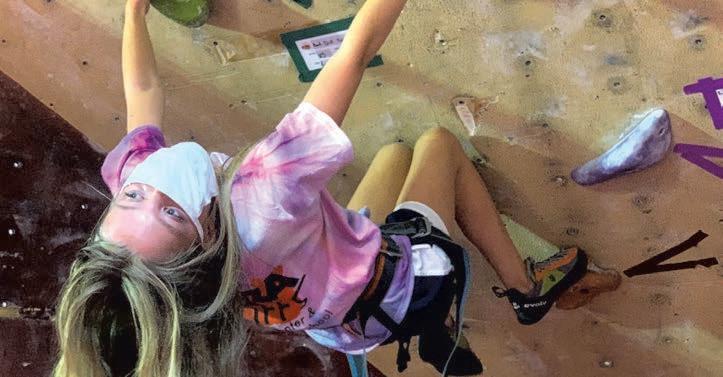

Iopened the refrigerator door and peered inside, immediately noticing the lack of leftovers. After a brief hesitation, I pulled out a pack of tortillas along with some SunButter and jelly. Coraline and Penelope — ages 4 and 22 months, respectively — would be getting rolled-up tortilla snacks for lunch.

As I assembled the roll-ups, food-prep thoughts took over my brain: What nights could I cook meals this week? What vegetables did we have left from last week’s farm share? How many cans of garbanzo beans were still in the basement? If I needed to make a run to the grocery store, how much free space was in the fridge, and how many cartons of soy milk could fill it?
In our home, I’m the food person. The responsibility for most of the meal planning, shopping and cooking falls to me — and it occupies a sizable chunk of my mental space.
And I’m OK with that. As a committed partner and father to two young daughters, I try my best to be an equal teammate in all things related to raising our children and keeping up with household chores. That requires a lot of honest communication between myself and my partner, Stephanie, as the balance continually shifts due to life’s other commitments and responsibilities.
Let’s be honest, though. The bar is lowered for fathers a lot of the time. Speaking to the dads out there, how many of you have ever been in public with your children and heard something along the lines of: “It’s so nice you’re giving Mom some time o ”? As if spending time with our own children and taking care of them is just a gift to our partners. When that bar is set so low, it doesn’t take much to look good in society’s eyes.
be less than satisfying. According to research from the University of Maryland — which examined more than 20,000 mothers’ responses from the U.S. Bureau of Labor Statistics’ American Time Use Survey between 2003 and 2012 — when there’s a man in the house, moms actually spend more time on chores than single mothers with no partner present. Additional research, examining that survey between 2008 and 2013, found that married women who were the sole breadwinners averaged almost
an hour of housework each day, compared to an average of 11 minutes by married men when they were the sole breadwinners.
These trends have continued during the COVID-19 pandemic. A poll of 2,200 adults completed by Morning Consult for the New York Times in April 2020 found that “seventy percent of women say they’re fully or mostly responsible for housework during lockdown, and 66 percent say so for child care — roughly the same shares as in typical times.”
The same poll found that 45 percent of men felt they were responsible for a majority of the work helping their kids with remote learning, while only 3 percent of women said their partners did a majority of the academic support. How can there be such a large discrepancy between these two perspectives? I’m pretty sure I do an equal share of the work at home, but this data makes me wonder if I’m actually doing my part.
The idea that men still aren’t doing their share, yet think they are, should raise some eyebrows. Statistically speaking, fathers are still behind. According to global organization MenCare’s 2019 State of the World’s Fathers report, in order to reach a 50 percent share of unpaid work around the home, men would need to increase their time spent on such tasks for a minimum of 50 minutes
So, what can you do in your own home? Here are some tips that have worked for me and my partner: Have honest conversations. Talk about household duties often and openly. Try not to get defensive, know your triggers and make sure each of you is communicating how you really feel. Avoiding future resentment is one of the top priorities here.
Have a shared understanding of expectations. Does each partner know what the other expects of them and what needs to be done? It’s important to identify who needs help with what and to be on the
Play to each other’s strengths. My partner is great at scheduling appointments, and I’m aware of how many leaf bags fit into the back of our Subaru. A lot of times,
we divide tasks based on what we know and what we’re good at.
• Be encouraging. When your partner helps out, don’t immediately point out the imperfections. I’m not suggesting you cheer them on like you would a toddler attempting to tie their shoes, but make sure you’re recognizing the e ort, even when things aren’t up to par.
• Don’t enable. If you want your partner to help with the laundry, and you’ve articulated that but they continue to avoid it, don’t do it for them. If someone came by and mowed my lawn for free every week, you’d better believe I’d stop doing it myself.




Although most of the conversations Stephanie and I have around chores and childcare revolve around logistics — such as work schedules, what needs to be done and our own capacities — it’s really so much more than that. When I’m doing my fair share, I’m showing my two daughters that they should expect men to contribute equally around the home. I want them to look back on their childhood and remember their dad folding laundry while cooking dinner. I want them to remember their father packing lunches for hikes in the woods and making sure everyone had sunscreen on. And I want them to know that, in the future, it isn’t their sole responsibility to keep their homes clean and children fed.

1. Have your young artist choose an object or person to draw.
2. Encourage them to sketch out ideas for their surrealist drawing before beginning their final draft. Ask guiding questions.
• How might you change the scale (the size of one thing in relation to another) in your picture to make it surrealist? Could you make something normally small very big, and something normally big smaller? Example: Draw a person or a whole city inside of a glass bottle, or an ocean with a desert island inside of a tea cup. Draw a bottle of soda as tall as a building in a city skyline.
What would be a very strange or impossible setting in which to find this object or person? Examples: Draw a person’s face embedded in the trunk of a tree, or a person underwater. Draw a clock floating in outer space.
• Could you make something in this picture floating or flying that cannot float or fly in real life?

Over my nine years of teaching visual art in schools, surrealism has been one of my favorite styles of art to explore with my classes and a consistent student favorite, as well. Surrealism originated as a cultural, literary and artistic movement in the early 1900s, and it aimed to reject the conventional — to break free from the limitations of reality and the conscious, rational mind. The name “surrealism” in and of itself expresses this fundamental goal, with the roots of the word — sur indicating “above” or “beyond,” and real meaning “fact” or “reality” — converging to literally mean “beyond reality.”
Artists who championed the surrealist movement embraced the bizarre, the strange and uncanny, the unconventional or impossible, and the unconscious. Surrealists like Salvador Dalí, Frida Kahlo, Max Ernst, Dorothea Tanning and Remedios Varo all put paint to canvas to create dreamlike — or sometimes nightmarish — surrealist scenes rife with symbolic meaning. Contemporary surrealist artist Vladimir Kush emulates the surrealist style in his work, as well.
For kids and teens, surrealism presents an opportunity to exercise their imaginations. When pushed to reject or transform the normal and rational, young artists are able to flex their creative muscles, often coming up with far more original and exciting artistic compositions than are possible with realistic landscapes or still-life art.
Surrealism also o ers a particularly expressive mode for students, as surrealist artwork can contain symbolism unrestrained by the laws of reality. For example, students might choose to communicate the concept of time by incorporating an hourglass into their artwork; to represent the notion of family with a home or a human heart; or the idea of transformation with a caterpillar and butterfly.
In one of my favorite surrealist art units, I have students begin by choosing a simple object — a teapot, a pair of headphones, a flower — and inventing a surrealist scene based around it. As they progress, students can build symbolism into the imagery they draw around it or forgo this thought process and simply let their unconscious mind guide them as they create as strange a scene as they can imagine. Portraiture also lends itself well to surrealism, as young artists can easily transform a portrait to incorporate surrealist qualities by playing with the background or context of the portrait, or transforming aspects of the person portrayed.
Another personal favorite project — and a wonderful, accessible art-making opportunity for children who become frustrated with drawing and painting — is surrealist collage. By using scissors to carefully and closely cut out parts of magazine pictures or photos, then gluing those di erent pieces onto one background image, young artists can build incredible scenes.
• Can you combine two things in your picture into one, or replace part of an object or person with something else? Example: Replace the sails on a boat with butterfly wings. Replace the leaves on a tree with pages from a book. Replace a person’s hair with flowers or fire.
• Gather magazines from which your young artist can choose images to incorporate into their collage.
• Have your young artist select a background image onto which the parts of other pictures will be glued.
• Depending on the child’s age, you may wish to model carefully cutting around edges of images for them, or help them with the step of cutting out the parts of their chosen images.
• Have them use a glue stick to glue and attach the pieces of their surrealist collage onto their background images.

Pro tip: Parts of images can be layered to look more like one surrealist scene. Example: Cutting out the opening of a window or doorway in an image can allow you to layer a different setting underneath. This same trick can also allow you to make it look like a different piece of the picture is entering through the window or door by tucking the cut-out piece underneath the edge of the doorway.
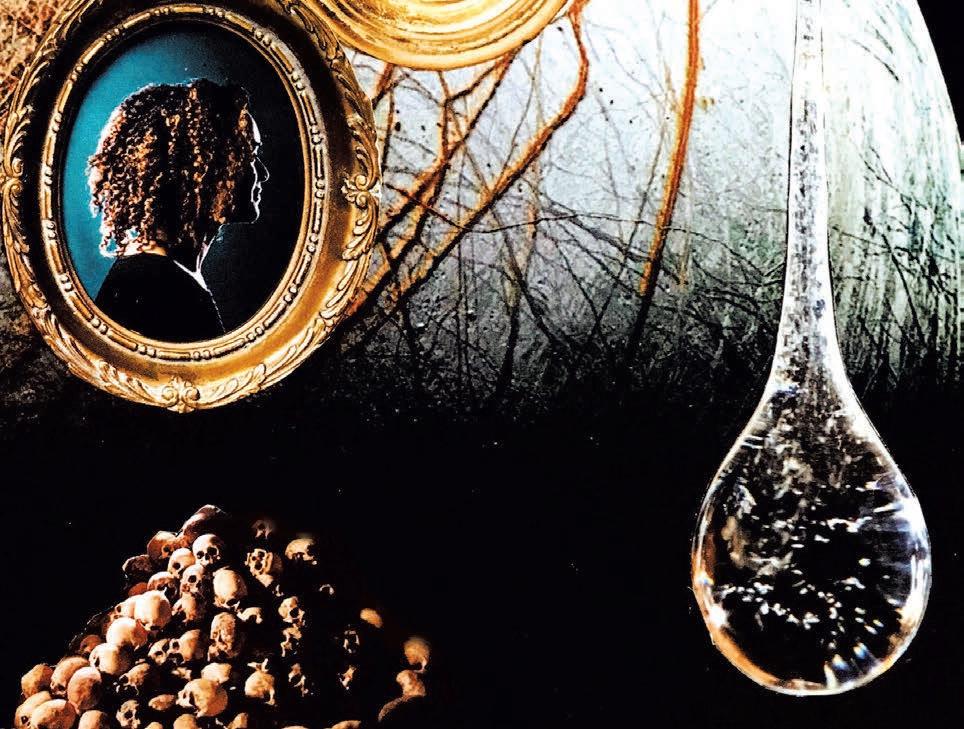
• tate.org.uk/art/art-terms/s/surrealism tate.org.uk/kids/explore/who-is/ who-salvador-dali
• wikiart.org/en/remedios-varo
• wikiart.org/en/leonora-carrington
• wikiart.org/en/vladimir-kush
• Please note that many of the most prominent surrealist artists (particularly Salvador Dalí and Frida Kahlo) often incorporated adult themes or imagery into their artwork. Be aware of this when searching online or exploring the topic of surrealist art together.
What follows are distilled quotes from a conversation with Charlotte resident Dr. Lydia Clemmons. A medical anthropologist who spent 35 years working in Africa, Dr. Clemmons now does that job remotely with quarterly trips to Africa while also volunteering as president of Clemmons Family Farm.
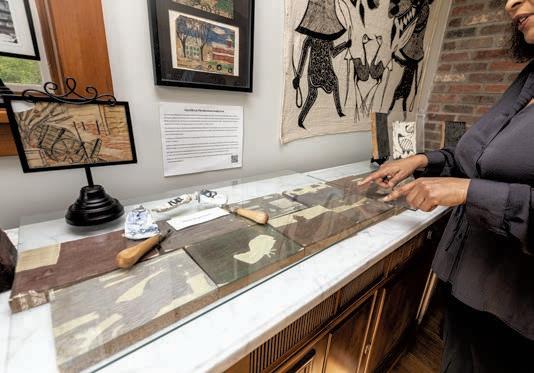

On moving back to Vermont eight years ago and becoming president of Clemmons Family Farm:


The farm has always been home. That’s been the anchor. It’s always been my parents’ dream. The little gray building was my mom’s shop, the Authentica African Art Imports shop. They were really hunkering into their heritage, to their love for Africa, for art, for community, for family. [My mom] used to put her African art — like masks, fabrics, drums, all kinds of cool things — into the back of her station wagon and drive all around Vermont to go to schools and go to K-12 classrooms
and teach kids about Africa. In our family, there’s always been a focus on young people. You can make an impact by going out and marching on the street, or you can make an impact by having a really good conversation with a neighbor and having a real connection and building an a ection across di erences of race. So there are di erent forms of activism. This is ours.
On one of the proudest moments in her career:
I was based at Johns Hopkins University working for an a liated organization, jet-setting around higher levels of ministries of health [and] large global programs, and really missing the rural communities. So I quit that job and





took a job with a Black-led nonprofit organization called Africare and moved to Mali. They dropped me o in a little village to start my work. It was a little adobe hut. No running water. This massive dust storm engulfed the little adobe hut, and I woke up the next morning and found half my luggage and clothes had been eaten by termites. It was all brown, dry dessert. But then you start becoming very attuned to the people and the culture, which is so vibrant, so rich, so colorful — and literally colorful in terms of the visual arts.
I was there to coordinate and lead a maternal and child health program. Africare had recently built a beautiful maternity ward for women to come in and deliver their children, instead of delivering at home, because there were so many maternal deaths. But no women were going. And one of the reasons, we found out after doing research, was that just discussing pregnancy was a taboo topic. The traditional clothing was very loose-fitting — large, billowy gowns. So you might not even realize a woman is pregnant until she’s just about ready to deliver. There are traditional
undergarments [called pendelu] that [only married] women wore. After we did our research, we came upon the idea of using this pendelu, which was white, as the key to help husbands and wives start communicating about pregnancy.
We decided to take the white pendelu and dye it green. The Mali landscape during the dry season was brown everywhere, [but during] the rainy season it looked like the greenest part of Vermont. That’s when it’s all about crops and agriculture and fertility. So we’re like, Green is the color.
So we dyed the pendelu green and did a whole campaign around the green pendelu. We hired storytellers who are called griot. They are like spoken-word artists and are the only people in the community allowed to say certain things. They made a whole song about the green pendelu that was coded to say: If you see the green pendelu, it means your wife is pregnant and you need to make sure she eats more fruits, vegetables and meat, and bring her to the health center so she can be examined by a nurse.
Within a week, suddenly women were coming into the health center.

Näri Penson and Kia’Rae Hanron sat across from each other on the 148-acre property of Clemmons Family Farm in Charlotte, under the shade of mature trees surrounded by sweeping views of farmland and the Adirondacks in the distance. Though there are thousands of farms in Vermont, Clemmons is one of just 17 that is Black-owned, according to the 2017 United States Census of Agriculture. It’s also a landmark on the Vermont African American Heritage Trail.
In May, Hanron graduated from the University of Vermont with a BS in art education. A month later, in June, Penson retired from her position as a senior teacher at the Schoolhouse, an independent school in South Burlington, after working there for 38 years.
The two women, separated by more than six feet of space and four decades, recently joined a team of 18 educators and artists to develop a new K-12 remote learning platform called Windows to a Multicultural World under the leadership of farm president Dr. Lydia Clemmons.
The program will include livestreamed and prerecorded lesson
plans, curated resources, and arts programming such as songwriting and painting, all intended to amplify African American and African diaspora history and culture. Dr. Clemmons said the team hopes to launch the pilot program in October, working with a select group of Vermont teachers, parents and students
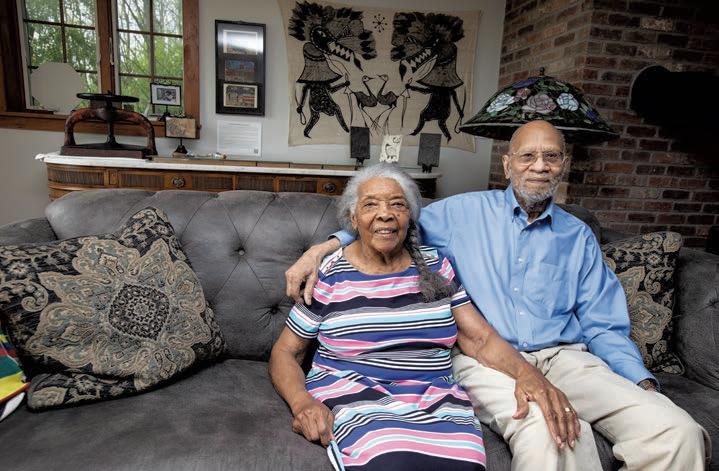
in Chittenden and Windham counties with whom the farm has prior relationships. They will make a portion of the program available to Vermont students for the 2020-21 school year, with the hope of having the full program available by the end of 2023.

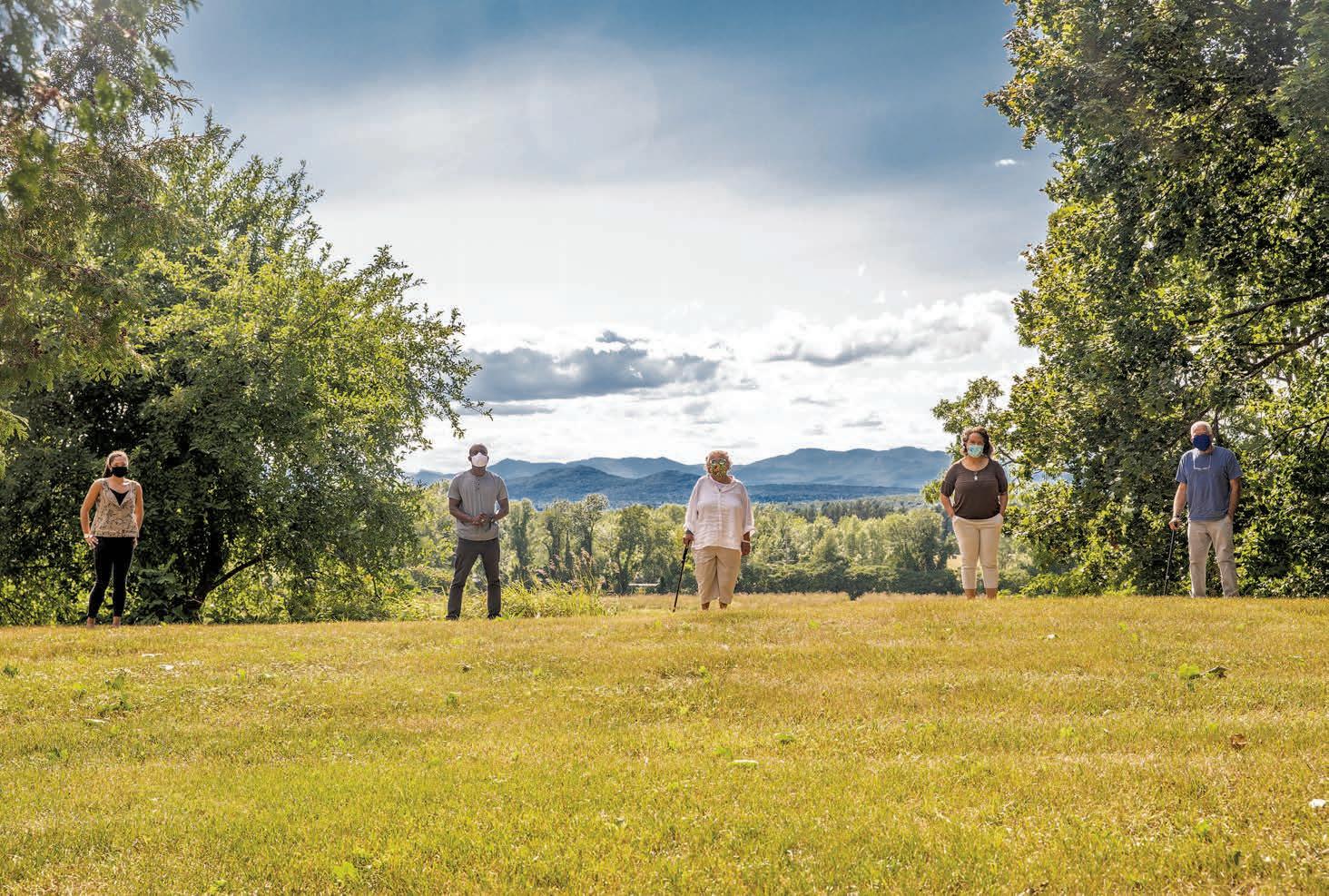
The remote learning platform is
divided into six “windows”: Traveling While Black; For the Love of the Land; Culinary Heritage; The Power of Image, Culture, Identity and Lineage; and The Power of Performance. Within each window, different topics will be covered. In the Traveling While Black window, for example, topics will include “Africa and the Transatlantic Slave Trade,” “Jim Crow and the Green Book” and “Driving While Black in the 21st Century.”
Dr. Clemmons said the curriculum aims to present the full spectrum of the Black experience, instead of “onedimensional portrayals of Black people as either victims or unreachable heroes.” While studying the transatlantic slave trade, kids will hear lesser-known stories of resilience and resistance, such as how African women braided grains of seed into their hair to have a food crop to plant when they arrived and how song dances on the slave ship were used to encourage one another and secretly communicate.
The entire program is being led, developed and implemented by Black artists and educators, who will help
children build empathy and enrich the understanding of the Black experience. Those artists include Haitian-born Julio Desmont, who will teach painting through the universal language of symbols, and Jamaican music teacher Michael Dyke, who will teach positivity and songwriting through revival music.
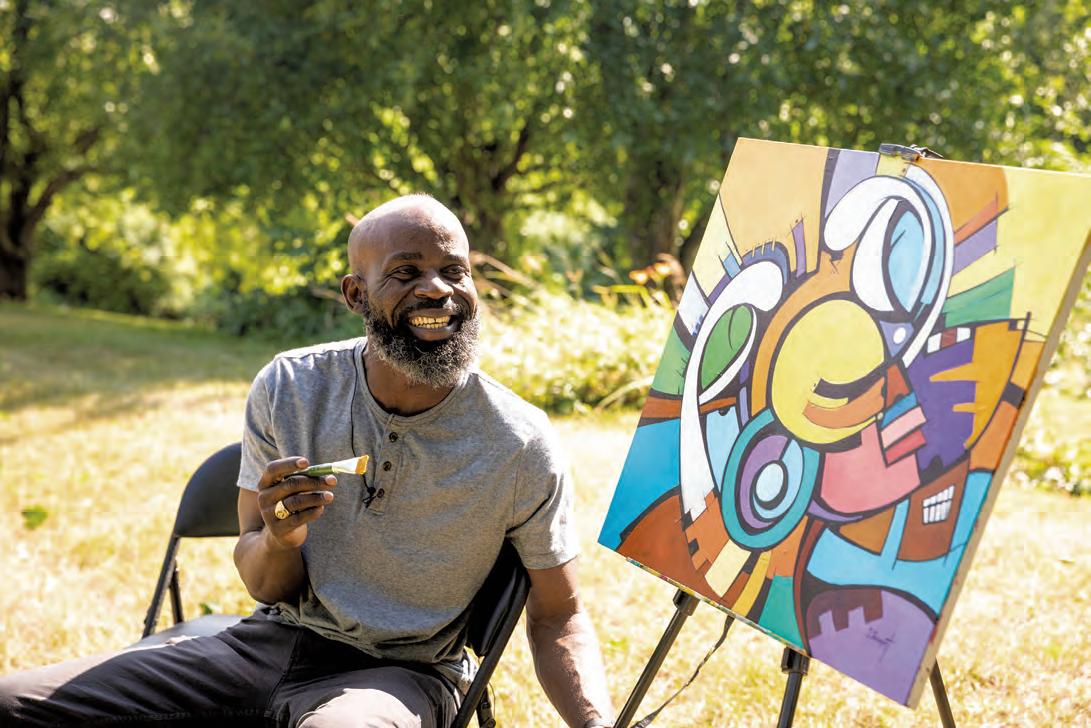
“In the [K-12] classroom, Black history is almost entirely written, interpreted publicly and taught by white people, especially in Vermont,” said Dr. Clemmons. “This is our stance to say Black people are going to do this. We are choosing what history to share, how to write about it and how to interpret it.”
Dr. Clemmons visited museums, including the Smithsonian’s National Museum of African American History & Culture, and also reflected on her family’s lives and travels to create the curriculum. Her parents, Dr. Jackson
the pandemic, plans shifted to a solely remote platform for now.
On May 25, a team of 18 teaching artists and facilitators, including nationally acclaimed playwright, actor and cultural worker Kirya Traber and Winooski’s Restorative Justice Panel manager and school board member Margaret Bass, embarked on a six-day training workshop over Zoom. It was the day that George Floyd was murdered in Minneapolis and Amy Cooper falsely accused Black birder Christian Cooper of threatening her in New York City’s Central Park.
powerful. And they were Vermonters. It was very soothing. I felt like having that focus helped me get through that time period,” said Penson.

Years ago, Penson was part of a volunteer group that brought multicultural education into Vermont schools. The group was ultimately unable to sustain the work while also holding down fulltime jobs. In contrast, she said, “This is for real. It’s sustainable.”
for schools or individuals. The farm also hopes to receive pro bono support from local business and marketing professionals.
She is particularly interested in bringing the program to less-diverse parts of New England. “In Vermont and places like Maine and New Hampshire, where less than 1 percent or 2 percent of the population is Black, that’s where I think it’s really needed for white and Black children,” said Dr. Clemmons.
Penson, who fist connected with the farm in the early 1980s, said she loves the idea of offering the curriculum online but also can’t wait until students can visit the property again. “Black people owning land and choosing to use this land to make performance space for other Black people is just so incredible and moving,” she said.
and Mrs. Lydia Clemmons, purchased the farm in 1962 that today implements African American and African diaspora arts, culture and educational programs as a nonprofit organization. Her father, who joined the University of Vermont Department of Pathology in 1962, was the second African American on the College of Medicine faculty. Her mother was the first African America nurse anesthetist at UVM and opened the Authentica African Art Imports shop in 1982 on the farm’s property.
“Raising five Black children in white, white, white Vermont and every effort that they made is now being reflected. They connected with the artists. They built community. They made Black cool,” said Dr. Clemmons. “This is part of their legacy.”
Dr. Clemmons said the ethnic studies bill, H.3, that Gov. Phil Scott signed into law in March — which requires that schools have programs reflecting multiple histories and voices of those who have been historically underrepresented — propelled the farm to apply for and receive a $100,000 grant in February from the Bay & Paul Foundations. They hired Hanron as the K-12 learning adviser and contracted Penson as a K-12 teaching artist mentor. Their work was initially intended to be in-person, but, due to
“The week of the workshop, I knew every day I was going to turn on this computer and there would be all these brown and Black faces. And that was so
Dr. Clemmons said the farm is hoping to raise additional funds for the program through grants, private donations and sponsorships from Vermont businesses. It will offer different membership levels
As a biracial Vermonter who grew up in Montpelier and was one of fie nonwhite students in her high school, Hanron said multicultural education was lacking in the state. “My last semester at UVM, in a college history class taught by a Black professor, I learned more about Black and African American history than I did [my entire life] up until that point,” she said. Now, “I get to use my degree [and] work to truly make the state a better place for students, not just the Black or brown students like myself who had serious identity crises, but for the white students, as well … This is my dream job.” K
In the [K-12] classroom, Black history is almost entirely written, interpreted publicly and taught by white people, especially in Vermont.
DR. LYDIA CLEMMONSJulio Desmont says his paintings are inspired by a bird he loved watching while growing up in Haiti. Musician Michael Dyke says he never leaves the house without an instrument in hand.




Three winners will each receive an annual family membership to the Fairbanks Museum & Planetarium. Send Kids VT your work of art by September 15. Be sure to include the info at right with your submission. Winners will be chosen in the following categories: (1) ages 5 and younger, (2) ages 6-8 and (3) ages 9-12. Winners will be named in the October issue of Kids VT. Send your highresolution scans to art@kidsvt.com or mail a copy to Kids VT, P.O. Box 1184, Burlington, VT 05402.


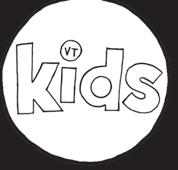



To enter, submit information using the online form at kidsvt.com/birthday-club
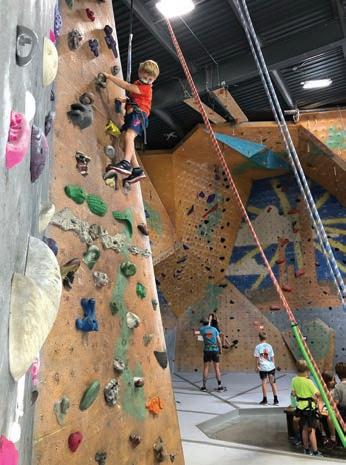

Just give us your contact info, your children’s names and birth dates, and a photo, and they’re automatically enrolled.

Our judges were wowed by the fabulous submissions mailed in as part of this month’s coloring contest. Arawan, 9, went outside the lines to create “Monkey’s Big Day” with a bright blue sky and additional creatures along for the ride. Six-year-old Maëlle used all the colors in the crayon box to create a very “Happy Monkey.” Addie, 5, gave her “Awesome Swimming Monkey” an awesome swimsuit with lots of texture and color. Thanks to all who entered! We can’t wait to see what you have in store this month.
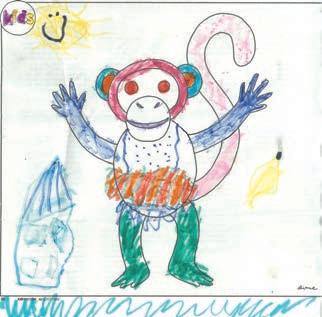




“WIFI THE MONKEY”
Lucian Elizarde, 10, Burlington
“FUNKY MONKEY”
Jade Nowain, 7, Shelburne
13. She is a sweet, creative kid who enjoys dancing, singing, playing the ukulele and riding her bike. She is a kind big sister and loves her two dogs and cat.
EMMETT lives in Williston and turns 2 on September 19. He has spent most of the summer riding his balance bike, swimming and playing with his new puppy, Riley. He also enjoys airplanes, tractors and coloring.
ALEX lives in Eden and turns 9 on September


7. He loves swimming with friends and enjoys being outside. He has the most





“RAINBOW MONKEY”
Elsa Brashares, 11, Charlotte
“TOURIST MONKEY”
Schylen Grace, 11, Huntington
“JUMPING MONKEY”
Adeline Bucossi, 5, Waterbury
“GO BANANAS”
Victoria Bove, 6, Colchester
“MONKEY IN SPACE”
Oliver DePaolo, 9, Hyde Park
“THE MONKEY PICTURE”
Abbie Crews, 5, Johnson
“JUNGLE”
Christine Pompei, 9, Barre
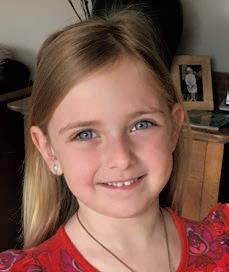

“BLUEBERRY MONKEY”


Sophie Felix, 5, Burlington
“CURIOUS GEORGE GOES CAMPING”
Finn Nunery, 7, Craftsbury


“ME”
Jack Voelsing, 5, Burlington

“FOLLOW THE YELLOW BRICK ROAD”
Indy Roberts, 11, Montpelier
Baldwin Bruin here! While I munch, here are a bunch of words about my favorite fruit for you to crunch.
ACROSS
1. “-” is for apple
4. Cooked dessert apple
5. Shape of apple
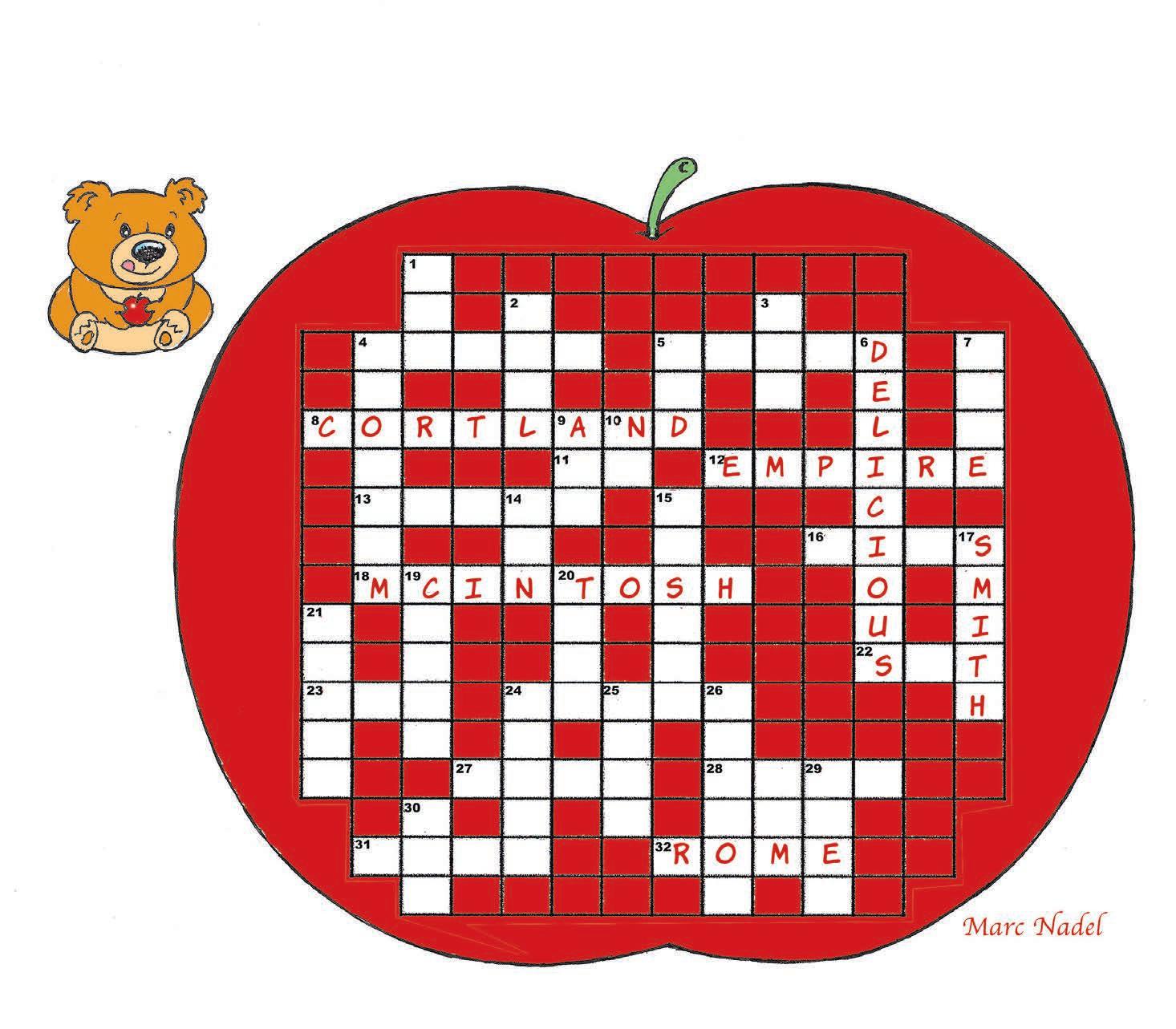
8. APPLE VARIETY
11. - - and fro
12. APPLE VARIETY
13. Smashed cooked apples
16. Apples in cooked crusts
18. APPLE VARIETY
22. What you do in a chair
23. - - - Cream
24. Red candy apple on a stick
27. What I do in the picture (part one)
28. What I do in the picture (part two)
31. See #1 down
32. APPLE VARIETY
DOWN
1. (With #31 Across) Pie & Ice Cream
2. Skin of apple
3. Enjoyment
4. Apple tree flower
5. Color of most apples
6. APPLE VARIETY
7. Center of apple
9. I - - - my apple, and it was all gone
10. Opposite of yes
14. Able to
15. Basketful of apples
17. With “Grannie,” APPLE VARIETY
19. Pressed apple liquid
20. An apple grows on a - - - -
21. When you’re happy, you - - - - -
24. Strained apple liquid
25. Which apple do you - - - - best?
26. Color of some #6 apples
27. Rhyme
30. How you catch apples in water

November 3, 2020, is a very important date in the United States: It’s Election Day. All across the country, Americans will cast their votes to help decide who will run our government. In a democracy, we get to pick who’s in charge.
Voting is one of the most basic and essential rights citizens possess, but it hasn’t always been available to everyone. When the U.S. was founded, only white male property owners could vote.
Many women won the right to vote in 1920 — 100 years ago — when the states approved the 19th Amendment to the Constitution. Many Black Americans were barred from voting in some states until the passage of the
Voting Rights Act of 1965. In fact, activists around the country are still fighting today against rules that restrict voting or make it more di cult.
Voting eligibility varies from state to state. Vermont makes it very accessible. All U.S. citizens ages 18 and older who live in Vermont can vote here. There are no exceptions.


And yet, it’s a sad fact that many Vermont voters simply don’t participate in elections. There are lots of reasons why: They might say they’re too busy, or they don’t know enough about the issues or candidates, or they don’t pay attention to politics. Some people don’t think their vote matters. But maybe they just need a little encouragement. That’s why this month’s Good Citizen Challenge is to MAKE A CREATIVE AND COLORFUL POSTER that will motivate adults to
All posters should:
• BE NONPARTISAN: They should not endorse a political party or candidate.

• INCLUDE THIS TEXT: “Vote on or before November 3. Find more information at sos.vermont.gov.”

• BE POSITIVE


• BE EASY TO READ




vote. We’ll print the most persuasive poster in Seven Days’ General Election Voters’ Guide, and we’ll use eye-catching entries in print and online to help boost voter participation.

We’ll be printing the guide at the end of September. Why so early? Because this year, many voters will be casting their ballots by mail in the weeks leading up to the election, due to concerns about spreading COVID-19.
• BE PROOFREAD: Please check your spelling before sending.













Scan or photograph your poster and email it with your name, grade and town of residence to goodcitizen@ kidsvt.com. The deadline is 5 p.m. on September 22 Let’s be sure all Vermonters know that their voice matters!

Worried about putting your kids in danger by sending them back to school this fall? Allow me to share a cautionary tale about a time I inadvertently put my own family at risk. The lessons I learned during our calamitous Labor Day camping trip last year are relevant to the COVID-19 crisis, as well.
My wife, Ann-Elise, and I have been camping together for more than 20 years, and we’ve raised our kids to love getting out into nature as much as we do.

Kettle Pond State Park in Marshfield is our favorite destination. An hour and a half from Winooski, where we live, Kettle Pond feels like a di erent world. It’s home to loons, salamanders, hawks, owls and giant, moss-covered boulders called glacial erratics. The campsites are remote — accessible only by boat or via the pond’s 3.1-mile loop trail. There’s no running water or cell service.
We camp there at least once a summer and started bringing the kids when they were infants; Graham tented out with us at 6 months, Ivy when she was just 5 weeks old.
There’s one major downside to camping at Kettle Pond: It’s a ton of work. All of your food, water and supplies need to be packed in and packed back out again, along with your garbage.
We boat everything to and from the site in our canoe, but gathering that stu and schlepping it there is time-consuming. It’s easier now that the kids are old enough to help; last year, Graham was 13 and Ivy was 11.
Unfortunately, on the weekend of our scheduled trip last September, we found out Graham had a football game on Saturday night. That meant we wouldn’t get to our site until noontime Sunday, and we’d have to leave Monday morning.
Was a 24-hour overnight at Kettle Pond even worth it? Ann-Elise, who does the bulk of the shopping, packing and prep work, said no. Desperate to save our family tradition, I suggested we make it a barebones trip. What if we slept out under the stars and brought only essentials? No tents, no chairs, no stove, no dishes, no pajamas. Just sleeping pads, sleeping bags and food we could eat with our hands.
The weather forecast looked clear, so she agreed. This one time, we thought, we could get away with it.
That brings me to the first lesson: Don’t sacrifice safety for convenience.
You want to sleep out under the stars? Fine. But bring a tarp no matter what the
weather forecast says. Sure, you might get lucky. But try to imagine what it will feel like if you don’t.
Next lesson: Denial will not make a problem disappear.
We had a perfect Sunday at Kettle Pond. We went swimming, built a fire and read books. We didn’t bring cards, but we played euchre using a deck Ivy made from pieces of bark. We went to sleep snug in our sleeping bags after listening to the loons.
But around midnight, I woke up to raindrops on my cheeks. The kids had bedded down beneath the branches of a hemlock tree, but Ann-Elise and I were out in the open. I could hear intermittent drops hitting the plastic surface of our air mattress.
At that point, we could have gotten up
and gathered some things — our books, our towels, the matches — to try to keep them as dry as possible.
Instead, we closed our eyes and willed the rain to stop. “It’s not supposed to rain,” Ann-Elise groaned. “It’s just drizzling,” I replied. “It’ll stop soon.”
But it only rained harder. Within an hour, I was contorting my body to avoid the water pooling inside my sleeping bag.
When I started to shiver, I knew I needed to get up and get moving. Being wet was uncomfortable, but being wet and cold on a brisk fall night without shelter nearby? That, it started to occur to me, was dangerous.
This is when I came to terms with the next lesson: Nature does not care about you.
Your fear, guilt, shame and worry don’t matter to a rainstorm, or a virus. Nature won’t take pity on you and let you o easy.
That hit home for me when I unzipped my sleeping bag and stood up to survey our campsite. I pulled on my boots and water sloshed out. We hadn’t been careful about stowing things before we went to sleep, and now our stu was scattered everywhere — and soaking wet.
I thought about paddling back to our car and returning to pack up in the morning. But one look at the water disabused me of that notion. Wind and rain roiled the surface. It would be very choppy and hard to see rocks and the shore in the dark.
We couldn’t walk out, either. Our “bare-bones” packing list had not included flashlights or headlamps. We figured we wouldn’t need them as long as we had our phones. But we couldn’t use our phones in the rain!
By now the kids were wet, too. Ivy got up and stood with me and Ann-Elise beneath the dripping hemlock branches as we considered our options. Graham was somehow still snoring quietly, so we let him sleep.
I realized that if it got much colder, we would all get hypothermia. We couldn’t leave safely, and it would be di cult to call for help. Our nearest neighbors were strangers sleeping a quarter mile away. Ann-Elise and I didn’t want to alarm Ivy, but we could see that we were in serious trouble.
Not only did I feel like an idiot, now I was scared.
Next lesson: When you’re at an impasse, improvise.
Around 2 a.m., as it started to rain harder, I looked around to see if there were something we might be able to use as a shelter. And then it hit me — the air mattress!
Ivy, Ann-Elise and I deflated it slightly and wedged it between some hemlock branches. The three of us huddled beneath it, with our damp dog, Ginger, curled at our feet. We must have looked pathetic, but at least we weren’t getting any wetter.
Next lesson: Intense situations can give you a new appreciation for each other.
I’m reminded of this “silver lining” constantly during the pandemic; AnnElise and I agree that we both felt it keenly that night at Kettle Pond, as well.
Once we were under the mattress, AnnElise was delighted to see me pull out a dry
red fleece I’d hidden beneath my sodden hoodie and T-shirt. I’d been using it as a pillow, and when the rain started I’d tucked it under my shirt to shield it.
“That is so smart!” Ann-Elise exclaimed. “I’m so glad you brought that!”


I have poor circulation and am always cold, so my dropping body temp had been weighing on her mind.
As I started to put it on, I asked her to hold my smartphone, which I’d stowed in the waistband of my jeans. “Do you want to put your phone with mine?” she asked. “It’s in a Ziploc in my bra.”
“Oh, my God, you have a plastic bag!” I cried, relieved that I wouldn’t have to worry about my phone anymore.
When Graham finally emerged from his sleeping bag with bare feet, we insisted he put on socks and shoes, even though they were wet, to conserve his body heat. He didn’t resist, though he regularly defies our demands to put on warm clothes in winter. He couldn’t quite manage on his own, though, and I had to bend down to help him while he held on to Ivy and Ann-Elise for balance.
When I asked her about it later, Ivy said: “I remember when Graham was so cold he couldn’t put his socks on. That was a little scary, because he’s never cold.”
Through this whole ordeal, neither of the kids whined or cried. Nobody bickered or complained. We all just worked together to get through it. That part was pretty amazing.
Another important lesson: Telling stories from childhood helps pass the time.
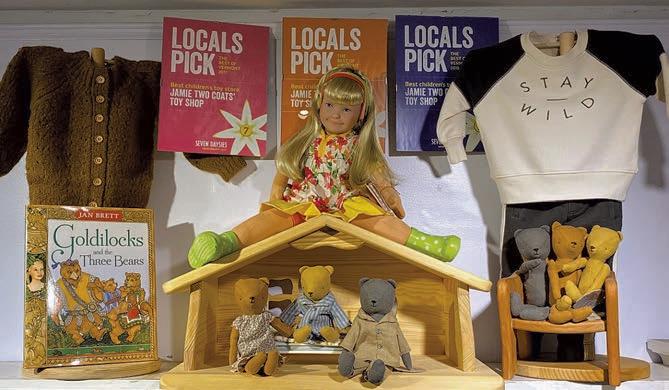
Recalling hard times you’ve made it through before is an excellent survival tactic, whether you’re stuck quarantining at home or huddled under an air mattress in the dark during a storm.
We warmed up a little under our makeshift shelter and decided we could last there until the rain stopped or the sun came up. To keep us all awake and alert, Ann-Elise and I started telling stories.
I recounted a trip I took for a backpacking class in college: We hiked up the highest mountain in Virginia in November, and our novice group, unprepared for the cold, nearly froze. We were really hungry, too, after the hapless instructor spilled our entire pot of pasta in the dirt.
Ann-Elise told us about a girl from her high school bike touring club who refused to train for their spring break trip to New Mexico. “She didn’t realize we’d be biking over mountains,”
Ann-Elise recalled. The rest of the group was forced to help carry her bags and had to shorten the route to accommodate her. The moral of the story? Don’t be that girl.
Ivy now reports that her favorite story was one Ann-Elise told about an ugly but heavy-duty poncho her dad bought her before a hiking trip.
“Everyone laughed at her,” remembers Ivy. “But then she was the only one who was dry when it rained.”
The last lesson: What doesn’t kill you will make a great story.
The rain didn’t let up, but around 4:30 a.m. the dark gray sky turned a little bit lighter, and we prepared to depart. Ann-Elise and Graham dumped the water out of the canoe while Ivy and I collected our belongings. By 5:15, we were ready to go.
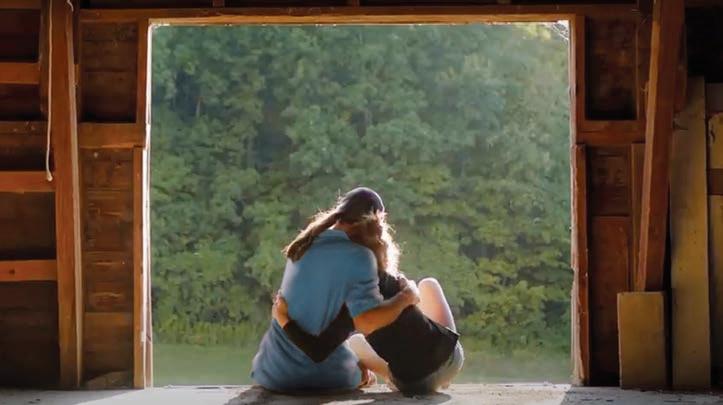
We thought the four of us, plus Ginger, could fit in the boat, but we hadn’t counted on the weight of our water-logged gear. Everything was so much heavier.
As badly as I wanted to paddle away, I had a vision of us capsizing and realized how much worse that would be. So Ivy, Ginger and I hiked out in the dim light instead, while Ann-Elise and Graham took the canoe.
What Graham remembers best about the paddle back is dipping his hands in the water. The day before, we’d all thought the water was freezing. But after a night of shivering in the rain, “It was like a sauna,” he said. “That’s how cold we were.”
The other thing Graham remembers? “It stopped raining as soon as Mom and I pulled up at the dock.”
They beat Ivy and me there, but we caught up with them in time to help carry a few things back to the car. Once the trunk was full and the boat was secured to the roof, we closed the doors, started the engine and blasted the heat.
Usually when we get home, we unpack right away. This time, we left everything in the car.
After we all took hot showers, we laid around the living room together, grateful to be warm, dry and safe. We’ve spent a lot of time at home since then, especially over the past few months, and I’ve tried to hang on to those feelings of contentment.
This is one of those stories we’ll tell and retell for years; Ivy already wrote an essay about it for school. No doubt our grandchildren will hear about it, too. Luckily, it ended well.
Fingers crossed that we’ll be able to say the same about this school year.

I hear how challenging these times are for all Vermonters. As your Governor, I will listen to you as we create and implement policies that Vermonters want - strong public schools and expanding high-quality childcare. We will invest in programs that keep and retain families in Vermont like raising the minimum wage and paid family leave. With these policies, working together, we will create a better future. A stronger Vermont.”
SEE PAGE 24 FOR PUZZLE




Boost



At Champlain College Online we believe in working adults. And we know that when things get tough, Vermonters are even tougher.
Whether you’re just starting your education or you’ve already earned a degree, an Online Certificate in Business, Cybersecurity, IT or Healthcare can increase your knowledge, expand your skills, and help you get the job you want.
Let’s go Vermont—we’ve got this.